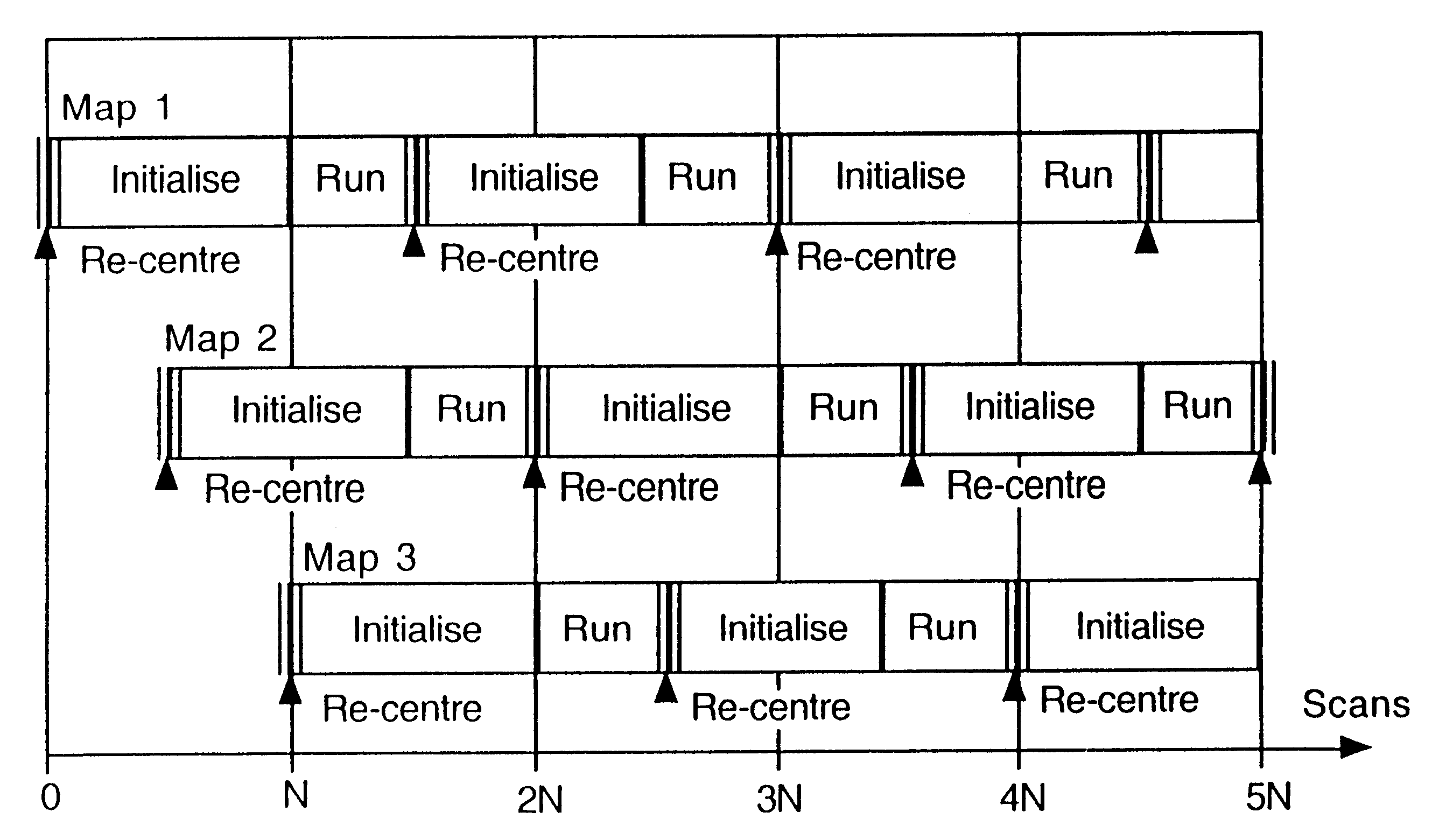Radar systems
- Summary
- Abstract
- Description
- Claims
- Application Information
AI Technical Summary
Benefits of technology
Problems solved by technology
Method used
Image
Examples
Embodiment Construction
The four improvements in accordance with the present invention will now be described in detail.
Compensation of radar movement
Compensation is made for the movement of the radar platform by storing the platform starting position, and taking this as the origin of co-ordinates. At later times the new platform position is computed as an offset from the starting position and stored. Whenever a reflected signal is received, this offset is added to the position of the scatterer, and the resulting corrected position is used to define its location in the clutter map.
Storing the offset is done as follows. Suppose the ship's motion is known and defined by (x.sub.0 (t),y.sub.0 (t)) at time t. Platform motion is then taken into account by using (x+x.sub.0 (t),y+y.sub.0 (t)) as the position of the clutter map.
The clutter map cell number can then be computed, and the method for doing this is dependent on the co-ordinate system in use for the map. The present invention is not dependent on the co-ord...
PUM
 Login to View More
Login to View More Abstract
Description
Claims
Application Information
 Login to View More
Login to View More - R&D
- Intellectual Property
- Life Sciences
- Materials
- Tech Scout
- Unparalleled Data Quality
- Higher Quality Content
- 60% Fewer Hallucinations
Browse by: Latest US Patents, China's latest patents, Technical Efficacy Thesaurus, Application Domain, Technology Topic, Popular Technical Reports.
© 2025 PatSnap. All rights reserved.Legal|Privacy policy|Modern Slavery Act Transparency Statement|Sitemap|About US| Contact US: help@patsnap.com



